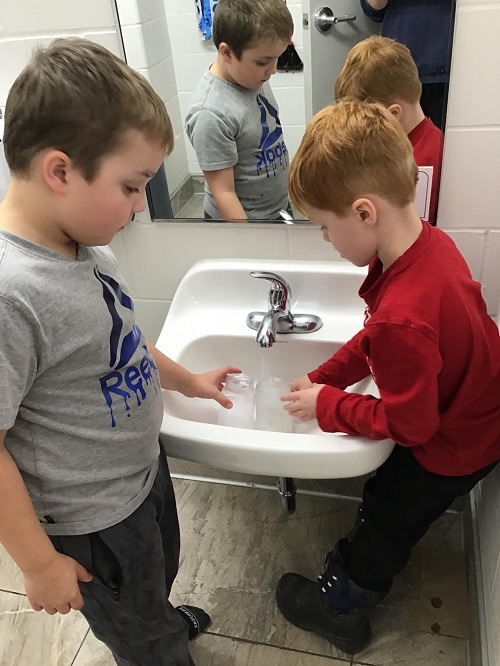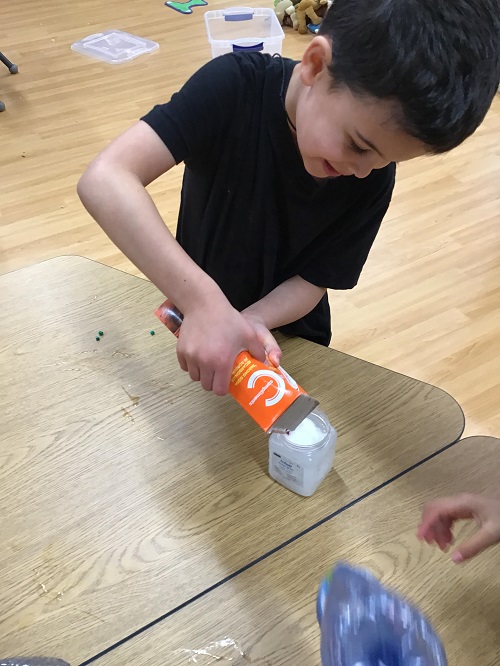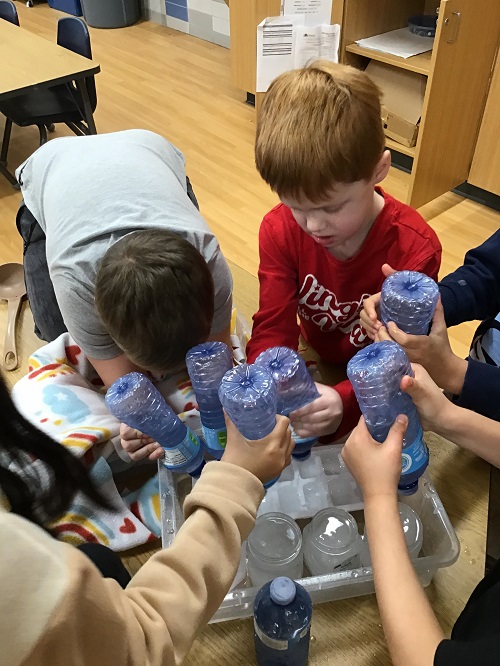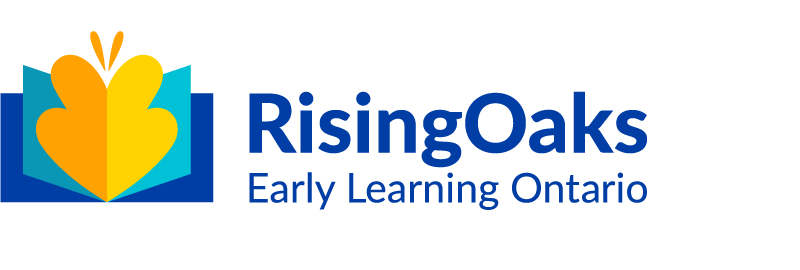One day, educator Wendy sparked the children's interest in a science experiment: making an instant ice tower. Wendy brought a sensory bin filled with ice cubes and several bottles of icy water. The children were encouraged to squirt icy water onto the ice cubes to see if it would create an icy tower.
"I don't think it's gonna work." Adain said. "This is not how you make ice." Gabriel agreed with him, declaring, "You need to put water in the freezer, and then it would make ice." The other children weren't sure about the experiment, but they were still eager to give it a shot! They all gathered around the sensory bin and began squirting water onto the ice. "See, it's not working." Nolan said. Even though no ice had formed yet, nobody stopped trying. "Nah, it's not working. I think because it's not cold enough," Salma said. "Yeah, maybe we need more ice," Aliza declared. The sensory bin began filling with more and more water as the children continued squirting. "Look! I think I'm making ice!" Gabriel exclaimed and pointed to a small ice tower on an ice chunk in a jar that he had been working on squirting water onto for a while. He was right! Nolan also noticed ice building on some ice cubes in the ice cube tray. "Guys, be careful. Don't touch the water so it can stay cool." Adain reminded the other children.
Educator Wendy asked the children why it began making ice after squirting water for a while instead of from the beginning. Gabriel thought that when they squirted more icy water, the temperature went down, and then it was able to start making ice. Salma thought it was because the ice cube got cooler after they squirted all the icy water. We then did some research on the iPad with the children. It turned out that the ice tower was made because the children squirted icy water onto icy water instead of ice cubes. It wasn't supposed to be made by squirting icy water onto ice. After the children used all the icy water, there were still a lot of ice chunks left in the bin. Adain and Gabriel came up with this brilliant idea, which was to do an ice melting competition to help clean up the experiment. Everyone grabbed a jar of ice chunks and began brainstorming ideas. Gabriel poured some baking soda into the jar. Adain asked if there was salt in the classroom. Salma took the ice straight to the sink and rinsed it with hot water. Everyone then began using Salma's strategy and did a great job helping clean up the mess!
The children demonstrated a range of skills including problem-solving, persistence, observation, collaboration, critical thinking, flexibility, and effective communication throughout the science experiment. They noticed changes in the ice, observing the formation of a small ice tower on one chunk and ice building on some cubes, indicating awareness. Collaborating, Adain and Gabriel proposed an ice melting competition to clean up, leading to teamwork in implementing various methods like using baking soda, salt, and hot water. In response to the initial challenge, the children engaged in problem-solving, experimenting with ideas like adding more ice or adjusting temperatures. Despite doubts, they persisted in experimenting with water, demonstrating resilience. When questioned about the delayed ice tower formation, they exhibited critical thinking by offering hypotheses and discussing possible reasons. Upon discovering the correct method, squirting icy water onto other icy water, the children showed flexibility by adapting their understanding and incorporating new information.
At the end of the activity, the children expressed keen interest in the process of melting ice. Looking ahead, we plan to conduct another experiment to explore the factors that influence the speed of ice melting.
